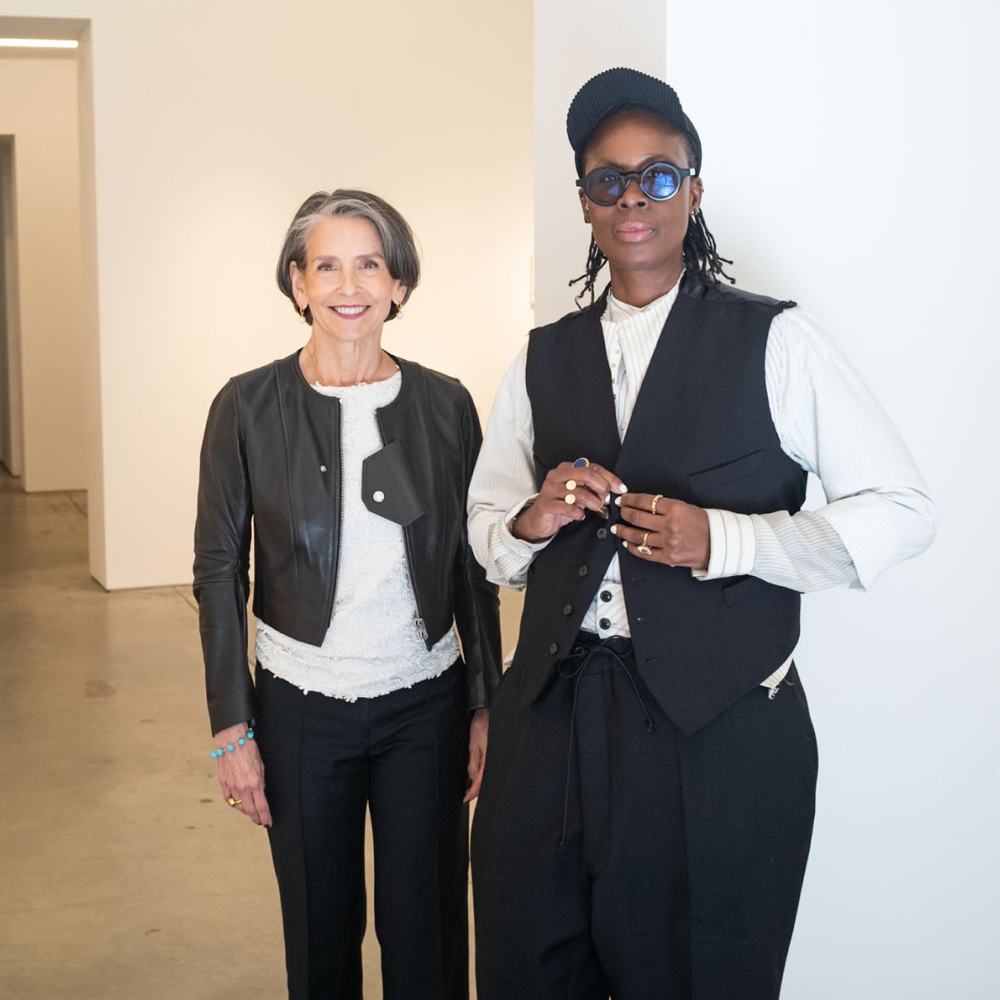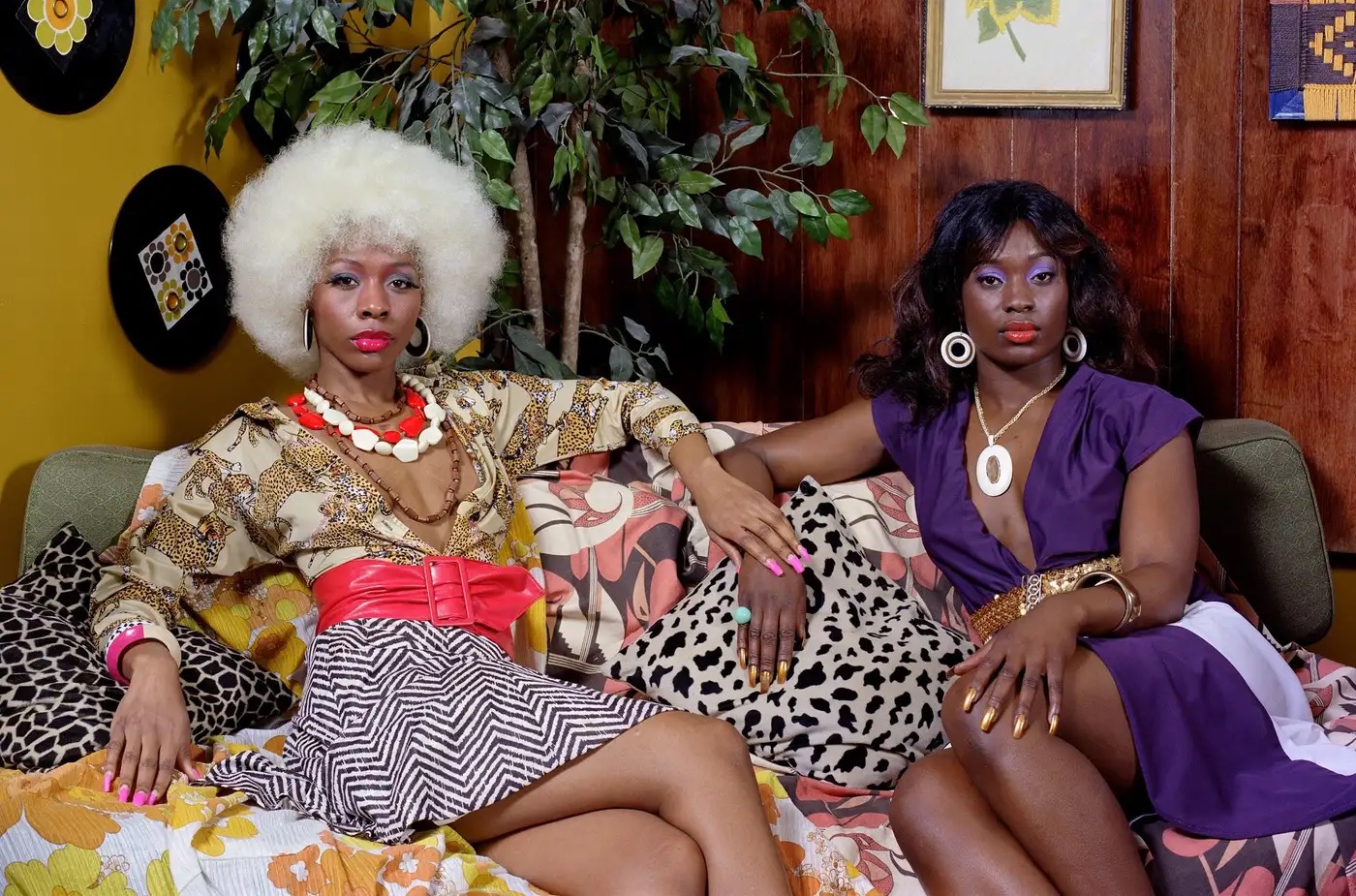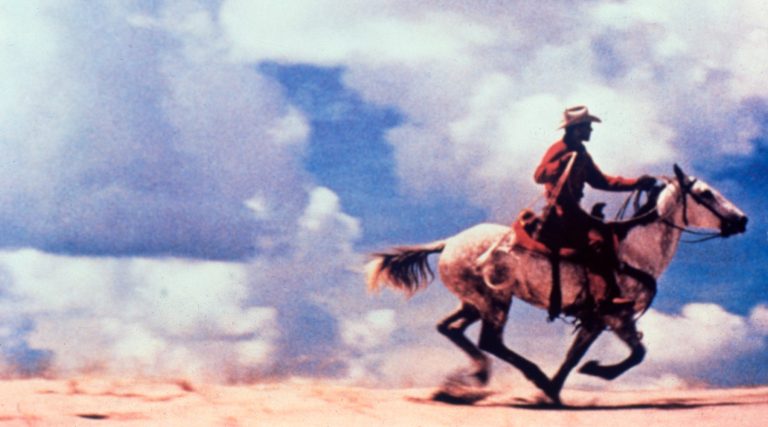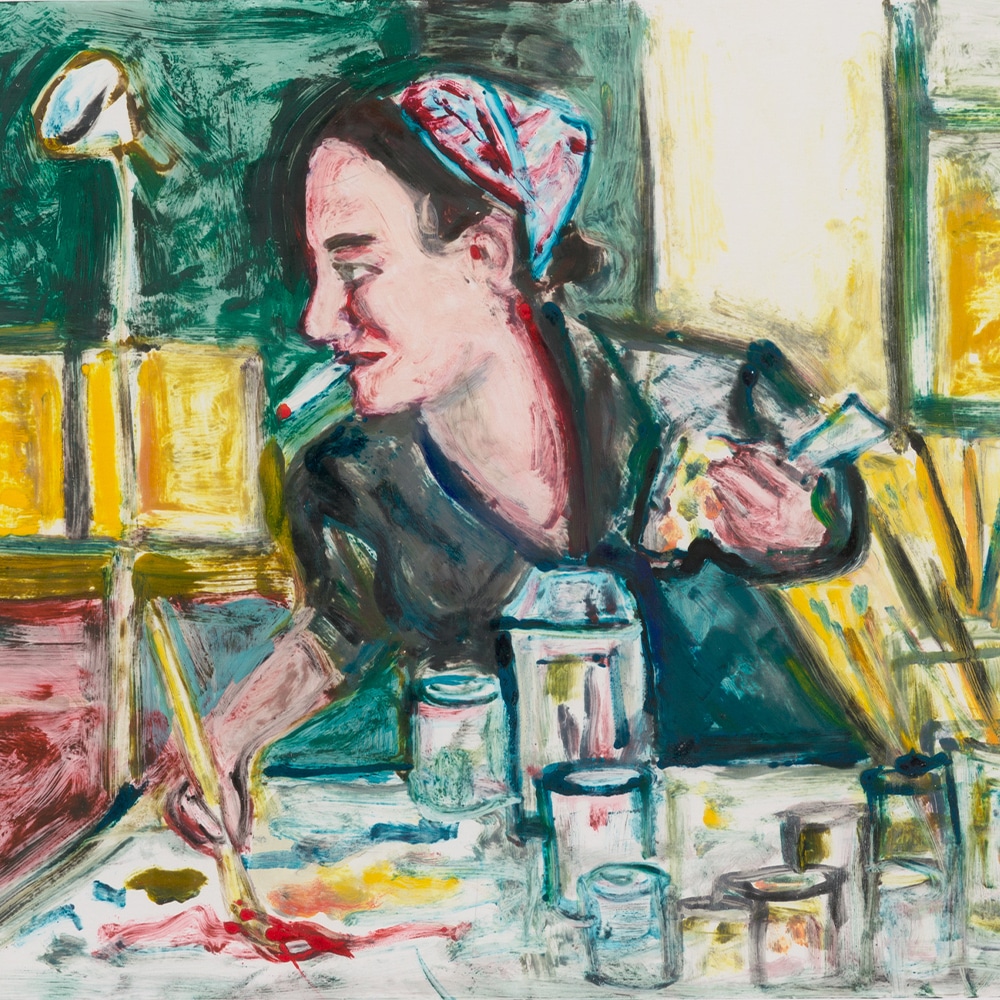July 27, 2025Yancey Richardson has been helping push the boundaries of photo-based art since she opened her gallery in Manhattan, in 1995. Like other influential dealers throughout history, she opens doors for her artists but also nurtures their creativity and helps shape their output. One artist she has collaborated with over the years is painter, curator and filmmaker Mickalene Thomas, who began working with Richardson in 2012.
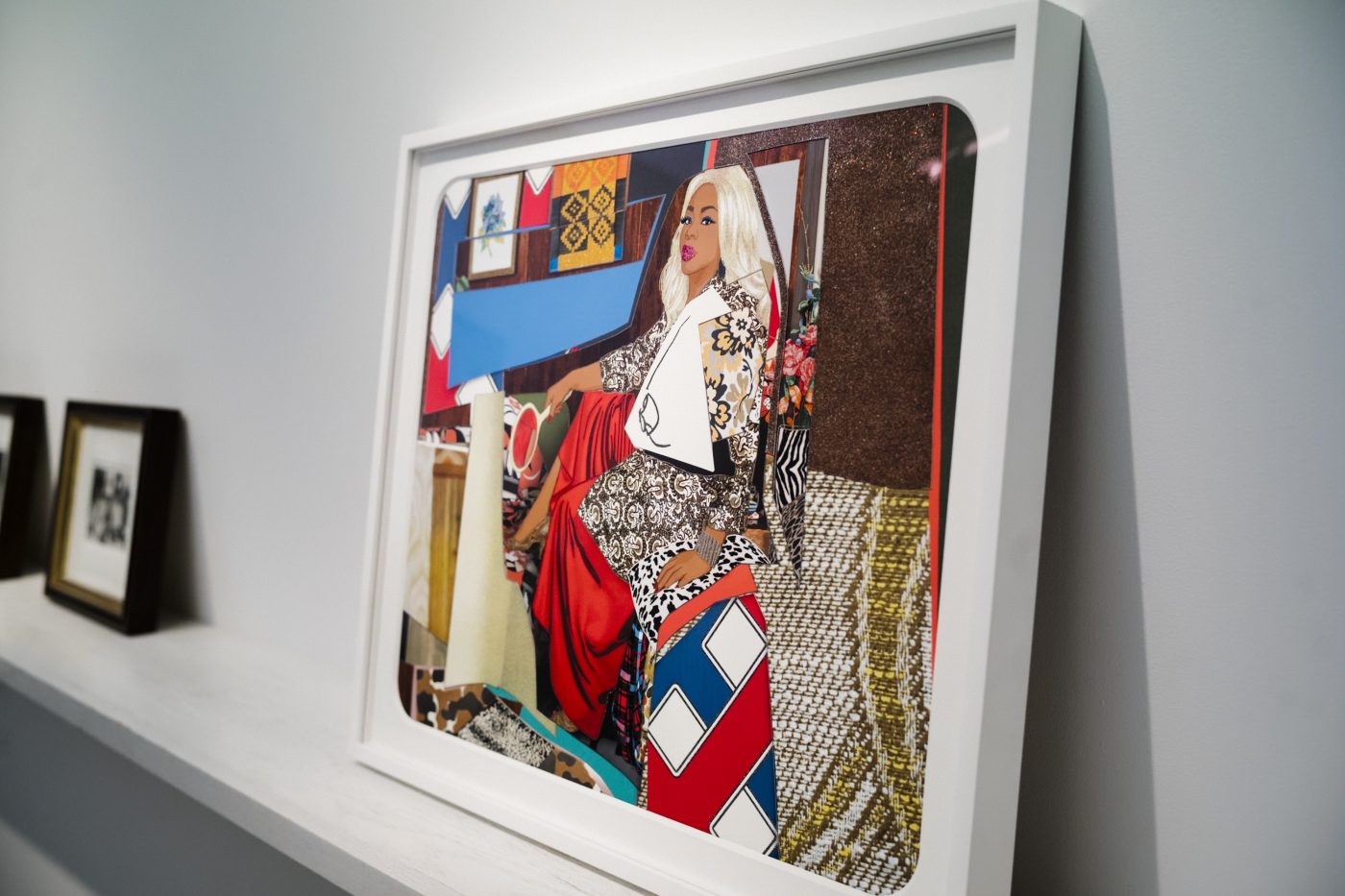
Thomas, who teaches at Columbia University’s School of the Arts, has received international acclaim for her ever-evolving mixed-media paintings and photographs, which are instantly recognizable for their carefully staged, sensual depictions of camera-ready Black women in dazzling interiors. Her queer Black aesthetic is charged by a distinct mix of cultural influences, from nostalgic fashion and decorating-magazine spreads to mid-century West African studio portraits and Pop art.
In celebration of the 25th anniversary of the founding of 1stDibs, Introspective magazine is speaking with some of the people who have brought compelling art and objects to the site. To that end, 1stDibs editorial director Anthony Barzilay Freund recently met Richardson and Thomas at the dealer’s West Chelsea space and spoke with them about some of the forces that have shaped their creative collaboration over the years. An edited version of their conversation appears below.
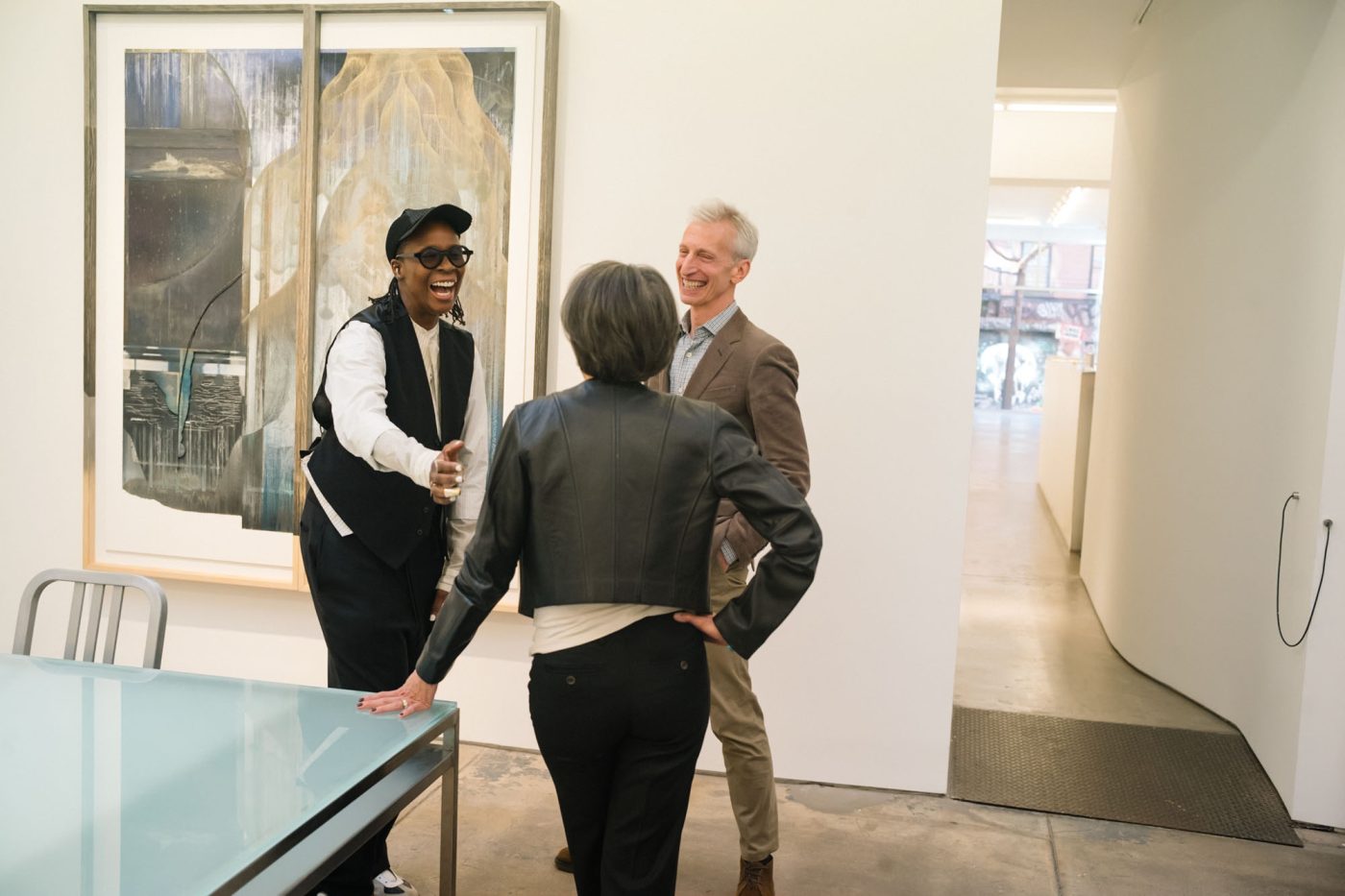
Anthony Barzilay Freund: Let’s start with the basics, Yancey. I know you well, but tell our readers who you are.
Yancey Richardson: I’m the founder of Yancey Richardson gallery, on 22nd Street in Chelsea. The gallery originated in 1995 in Soho in a famous building called 560 Broadway that housed about twenty galleries. It was an extraordinary place, but when rents were rising in Soho around 1998, galleries started migrating to Chelsea. We moved over in 2000.
Freund: The twenty-fifth anniversary of 1stDibs basically coincided with the burgeoning of the Chelsea Arts District. We’re asking people how the art world has changed in those twenty-five years.
Richardson: I’m about to celebrate my thirtieth anniversary, so this is a big year for me too. We’re doing a big exhibition working with all the gallery artists this summer to celebrate. But to answer your question, the art world has expanded so much since 2000. I have a special interest in photo-based art, and when I started out, that market was much smaller.
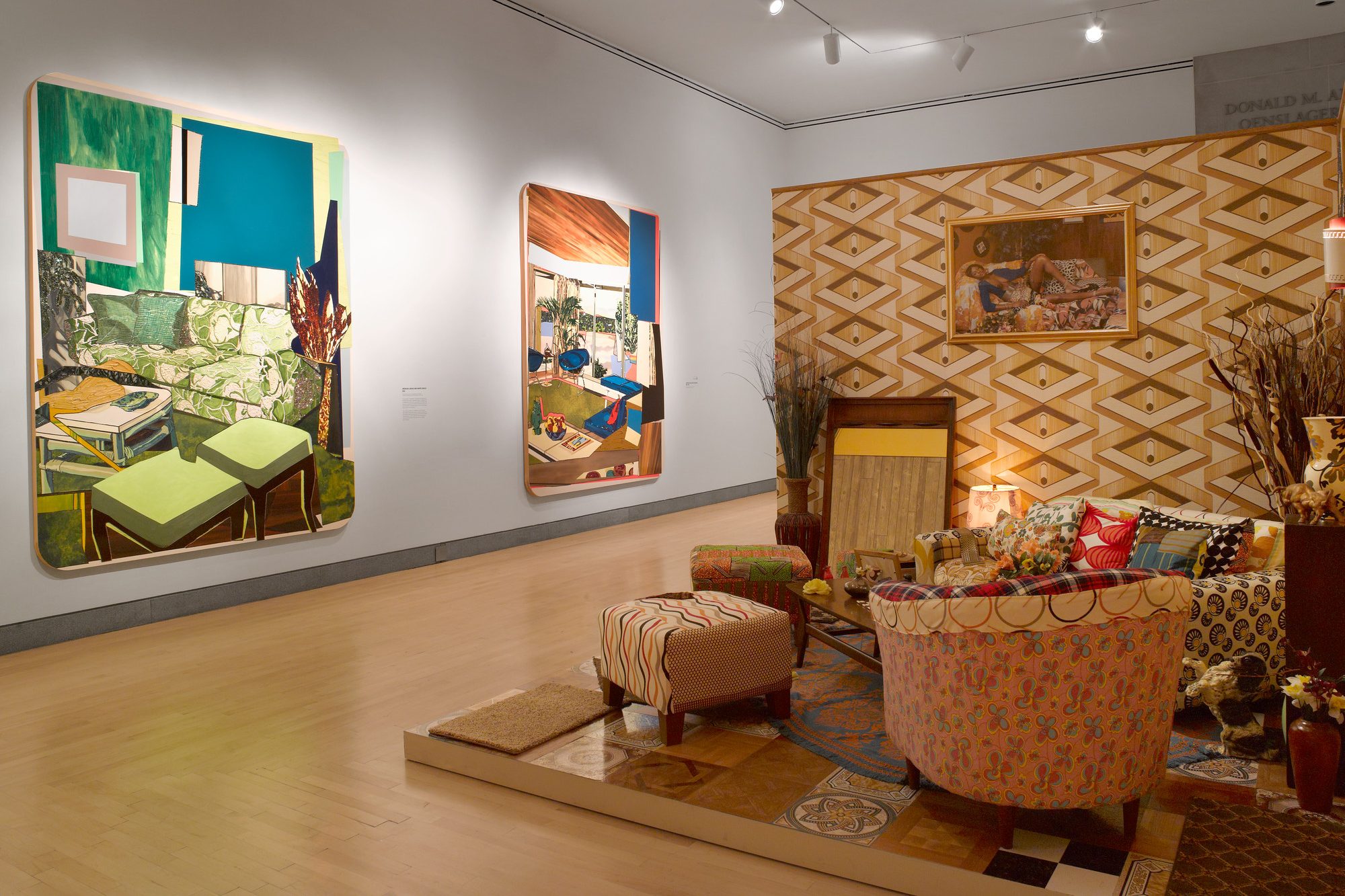
Freund: How was photography perceived twenty-five years ago?
Richardson: Photography in the fine-art market tended to be classic black-and-white work from the mid-twentieth century, for the most part. But I was more interested in how artists might use the medium conceptually. We’ve always had a very big engagement with female artists, artists of color, LGBTQ artists. That has not been my agenda per se, but a lot of the really great work I’ve seen happens to be by artists from those areas.
Freund: And when you work with one great artist, you tend to attract others who are simpatico to that type of work.
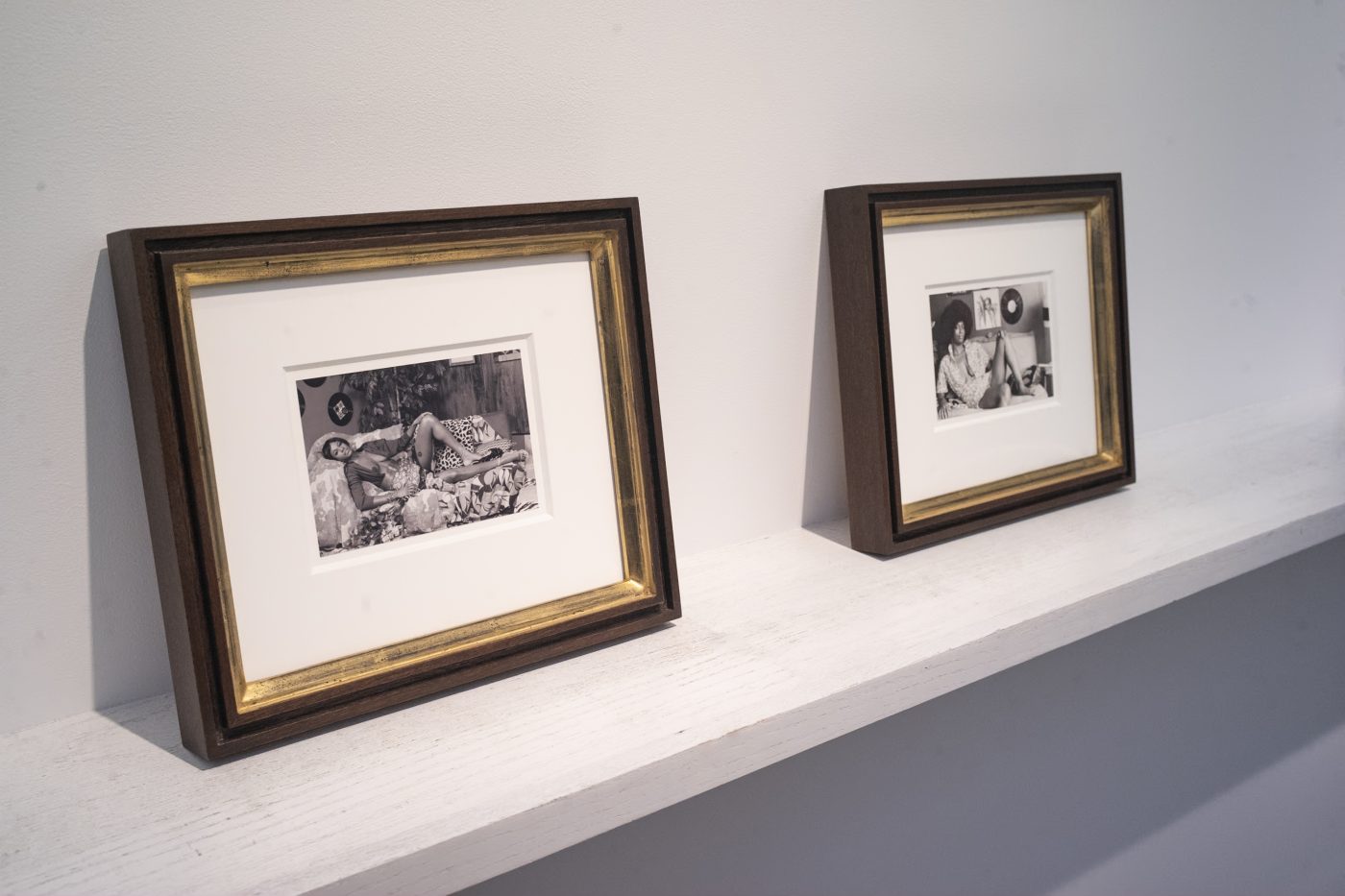
Richardson: I do find other artists through my artists. Mickalene and I started working together in 2012. She had curated this great show in Chicago called “Tête-à-Tête” about her dialogue with other artists whom she found really interesting and inspiring. We brought the show to New York, to my gallery. Zanele Muholi was in it. I had heard about Zanele’s work but had not seen it, and it was because of Mickalene that I was finally able to. Deana Lawson was also in that show, as well as Derrick Adams. It was an amazing grouping. They were all emerging. It was right at the beginning of their careers.
Freund: What makes you respond to an artist or a particular artwork?
Richardson: I’m asked that a lot! What I look for is work that is conceptually layered, that has very interesting ideas that are engaging and stimulating, and that’s beautifully crafted as an object.

Freund: Let’s bring Mickalene into the conversation.
Richardson: Hi, darling. Good to see you, as always — looking fab!
Mickalene Thomas: Hi! Nice to see you.
Freund: Mickalene, I recently saw you at the Louis Vuitton Foundation, in Paris, for the press opening of “Pop Forever, Tom Wesselmann &… .” That was such a great show, which included work by you and other artists of your generation and video interviews.
Thomas: I love that they brought in a diverse group of contemporary artists and gave us each a platform to create new work that was resonant of Wesselmann’s. I had a fascination with him right after graduate school, and then, I kind of pushed back. He was taboo to even think about because he was considered such a provocateur, and people were just dismissive. It’s unfortunate that as an American Pop artist he wasn’t revered as on the same level as Lichtenstein or Warhol, just because of his nudity.

Freund: I loved seeing your work in that show. You find so many inspirations from art history, from Pop and beyond. What was that like for you, to be able to have a conversation with him in a museum context?
Thomas: I had a lot of fun reimagining my own body of work through this sort of conceptual gaze of Wesselmann. Like, how can I compare the two or think about these Black bodies in relationship to his nudes.
Richardson: “The Great American Nudes.” How about the Great American Black Nude?
Thomas: Exactly. But it was not just his “Great American Nudes” but his maquettes with interiors, his still lifes. I felt there was this synergy and our practices were aligned in how we were looking at spaces and looking at the nude through Pop culture.
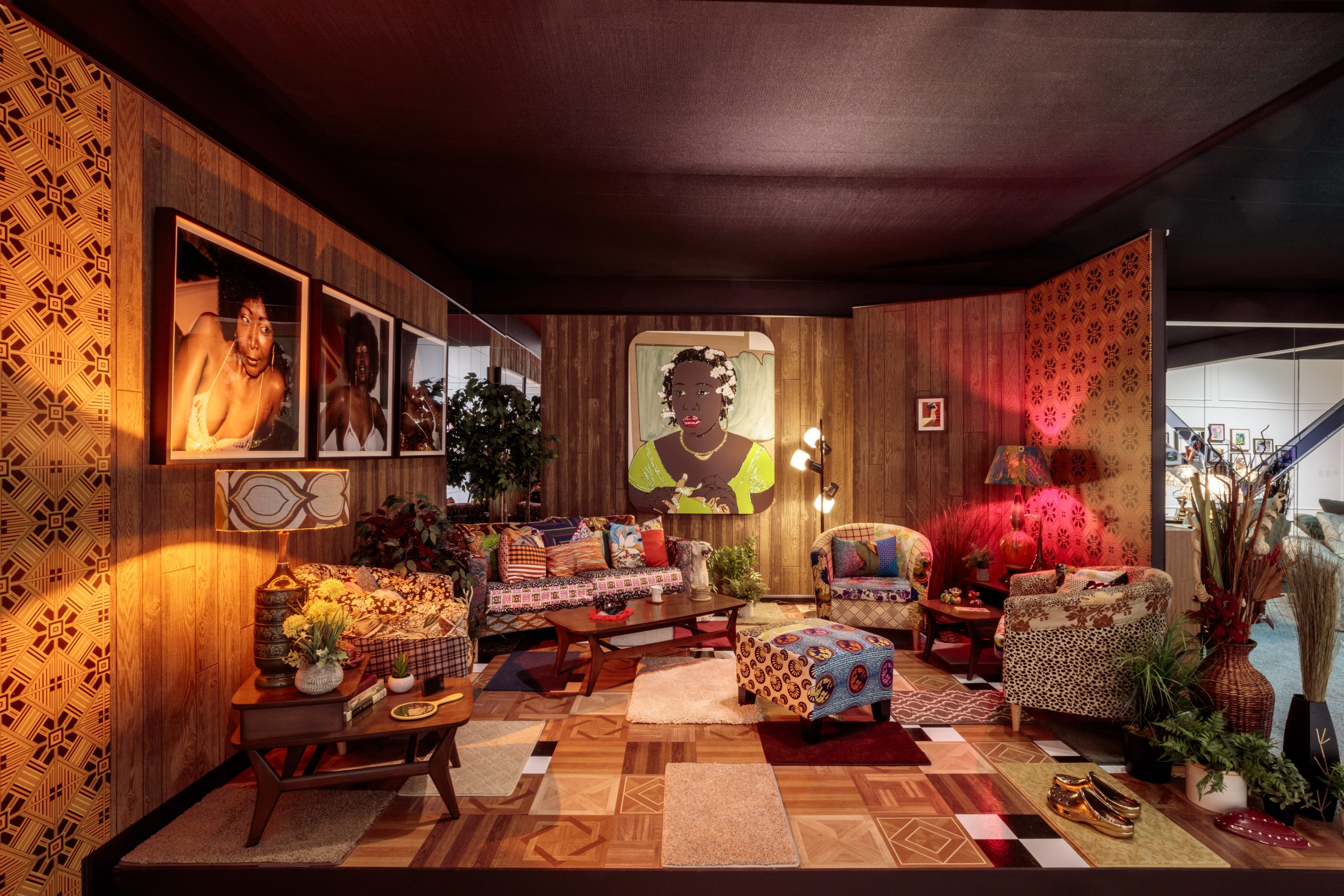
Freund: Can we talk about your interiors? Talk about what your particular fascination is with re-creating these incredible spaces?
Thomas: My initial fascination with domestic spaces came from really looking at West African photography — like Seydou Keïta, Malick Sidibé — and thinking of photo studios and how they were setting those up. I started collecting a lot of these fabrics — like, that flower pattern that you see and this sort of red-white-and-blue pattern you see there were fabrics that I acquired when my grandmother passed. She would always collect these fabrics and make throws and throw them over the couch or the chair or something like that.
So, it was really reimagining those spaces from childhood and [thinking about] how to tell that story or use that as a personal narrative for my own work. In relationship to looking at Western photography, I wanted to find a connection. And so, that was the really direct connection, once I got this fabric and started using it as a way of taking ownership of the space and really wanting to create a familiarity for the sitters and tell my own story about seduction and desire from the lens of a Black woman looking at other women but also celebrating the notion of beauty and their own prowess. But also just referencing art-historical poses and sort of taking all of those notions from various points of view and making sense of it in my own way.
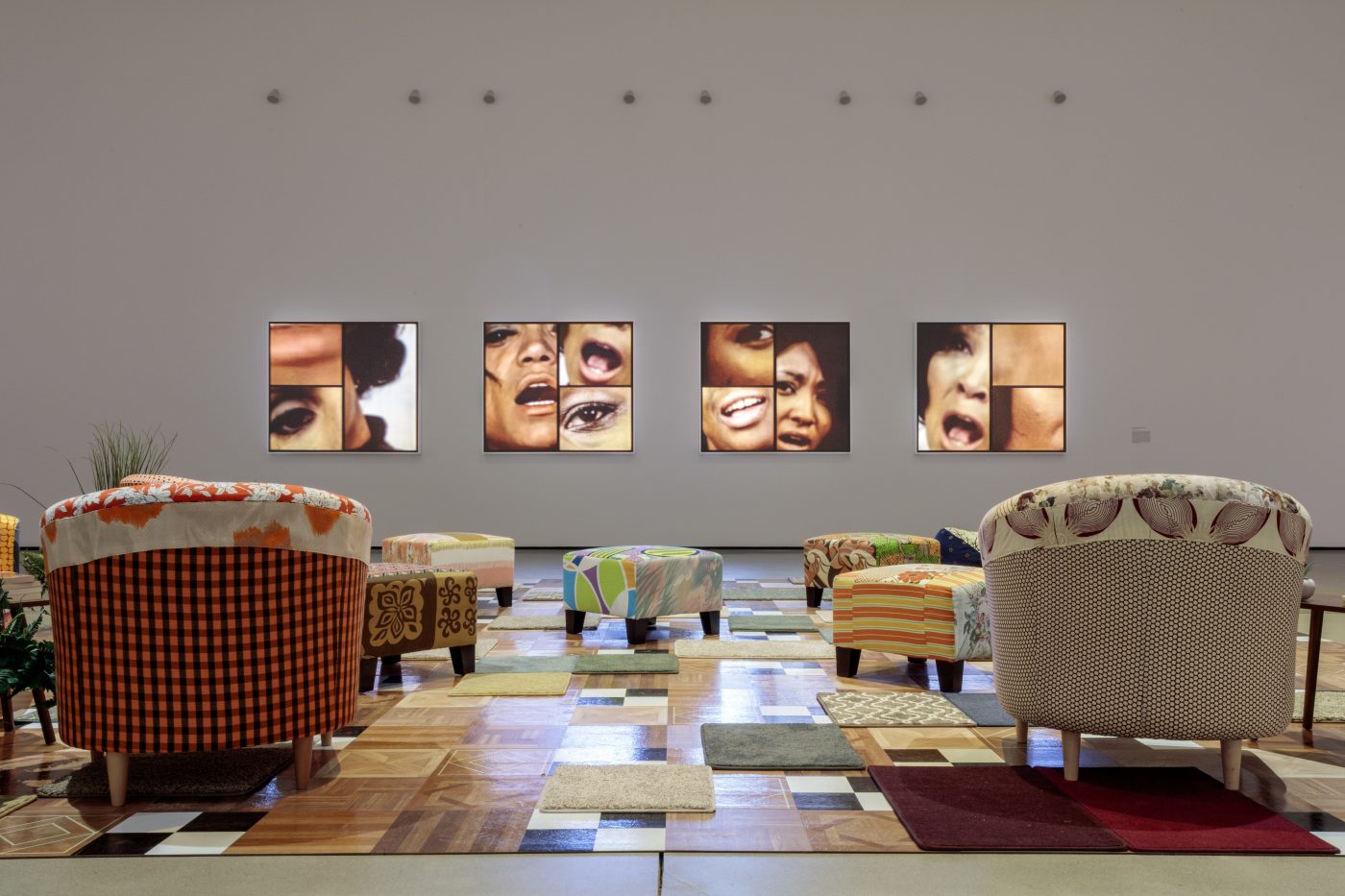
Richardson: Photography is so integral to Mickalene’s practice. When you think about the collages and the paintings and even video, it’s all photo-based.
Thomas: Whether it’s archival material or my own photographic images, it all starts with photography. And different types. I use a lot of Polaroids and different kinds of cameras, from medium format to large format to land cameras. Painting came first, but photography became a tool for me, a way of drawing and seeing before actually jumping into the painting.
The intent was never for the photographs to be works on their own. They were only resources for the paintings. Looking at them separately as their own works didn’t come until later, when the spaces started getting a little more complicated and a little more sophisticated and I started caring more about what was happening in the image. My camera changed, how I printed them changed. The spaces changed — how I started building them up. I started thinking about the illusion more. It became more poetic and not just a resource. It became a photograph.
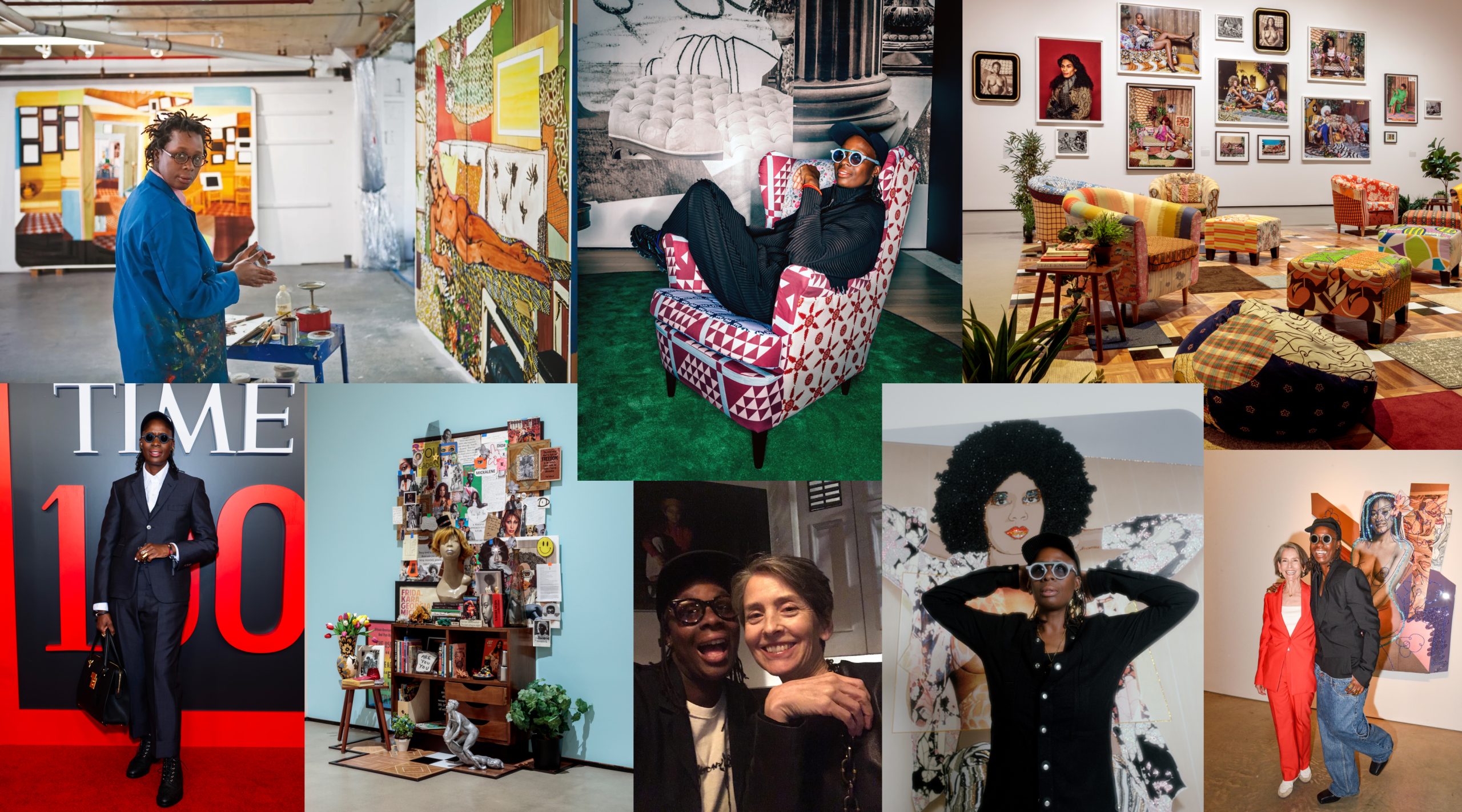
Richardson: And I just thought the photographs were so strong. I discovered that they were sort of under-recognized by all these museums. When I started sharing them, they saw that they were really great pieces on their own — not just as the basis of a painting. The Met bought one and the Museum of Fine Arts Boston and on and on.
Thomas: Over the years, Yancey has always said, “I think you may want to consider your photographs . . . in this way.” She is really well-versed in this world of photography, and she works with a lot of different photographers that I respect — from Laura Letinsky and David Hilliard to Zanele Muholi — and I started really appreciating her insight on my work to make it better.
What I respect about my relationship with Yancey is that it’s a partnership. It’s not just transactional. And I think your gallery should help your work get better.
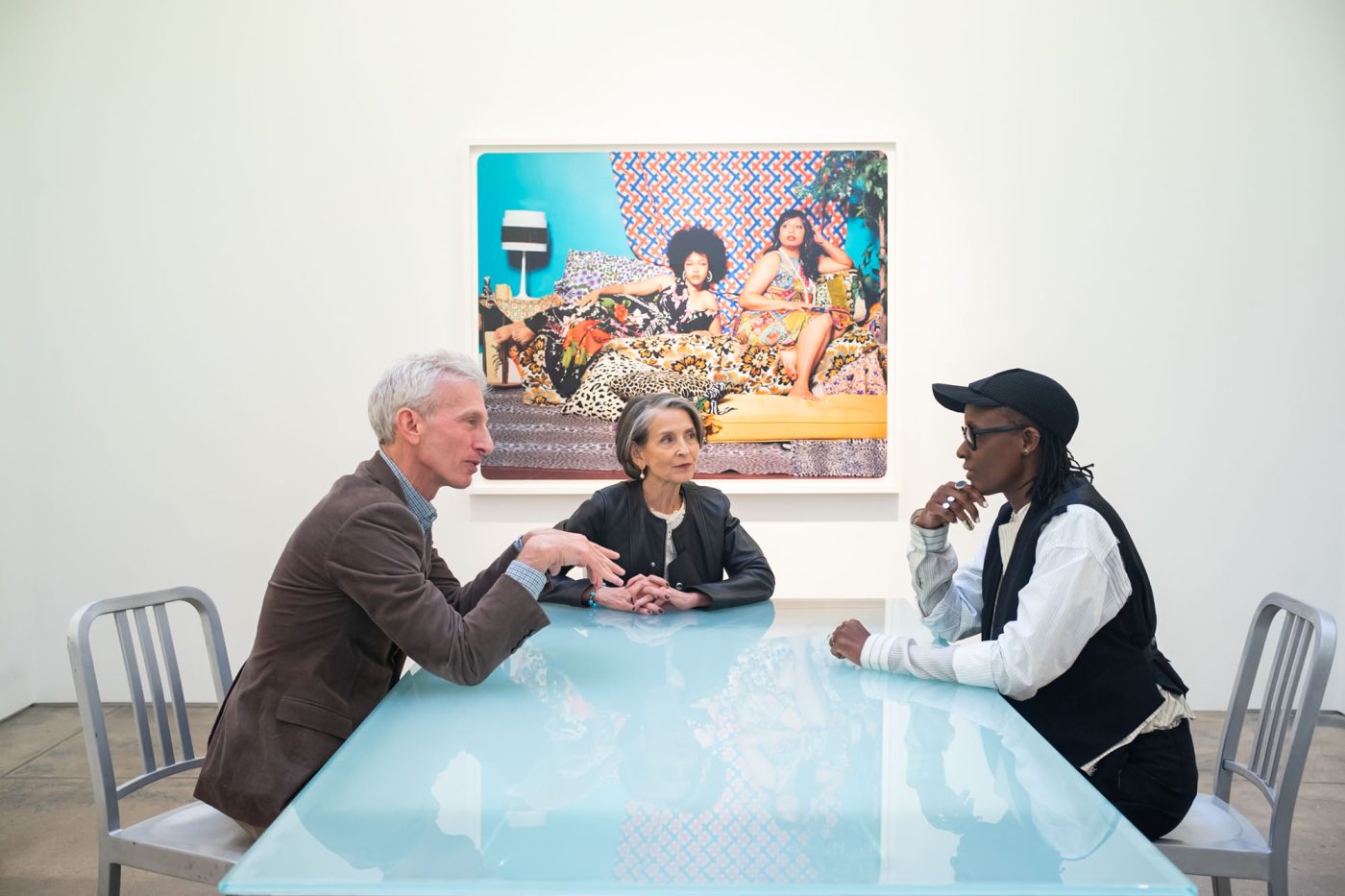
Freund: I think a lot of our audience may not fully understand the intricacies of the dealer-artist relationship.
Richardson: The gallery has to be a safe zone for the artists, but we also have to give critical feedback because they’re working kind of in isolation. It’s a conversation and an exchange. Early on, for instance, I had this idea about Mickalene using dye sublimation, and we kind of tried it, and initially it didn’t work. The technology wasn’t quite there. We then tried a newer lab, and Mickalene just took off with it and made these large-scale collages with dye sublimation where the image is not just printed on metal but the color is actually impregnated in the metal. It’s amazing work that nobody’s ever made. It’s very dimensional and shaped, in a place between photography, sculpture and painting.
Freund: Sounds as if the dye-sublimation work is creating a whole new industry for these labs. Other artists are going to start doing it.
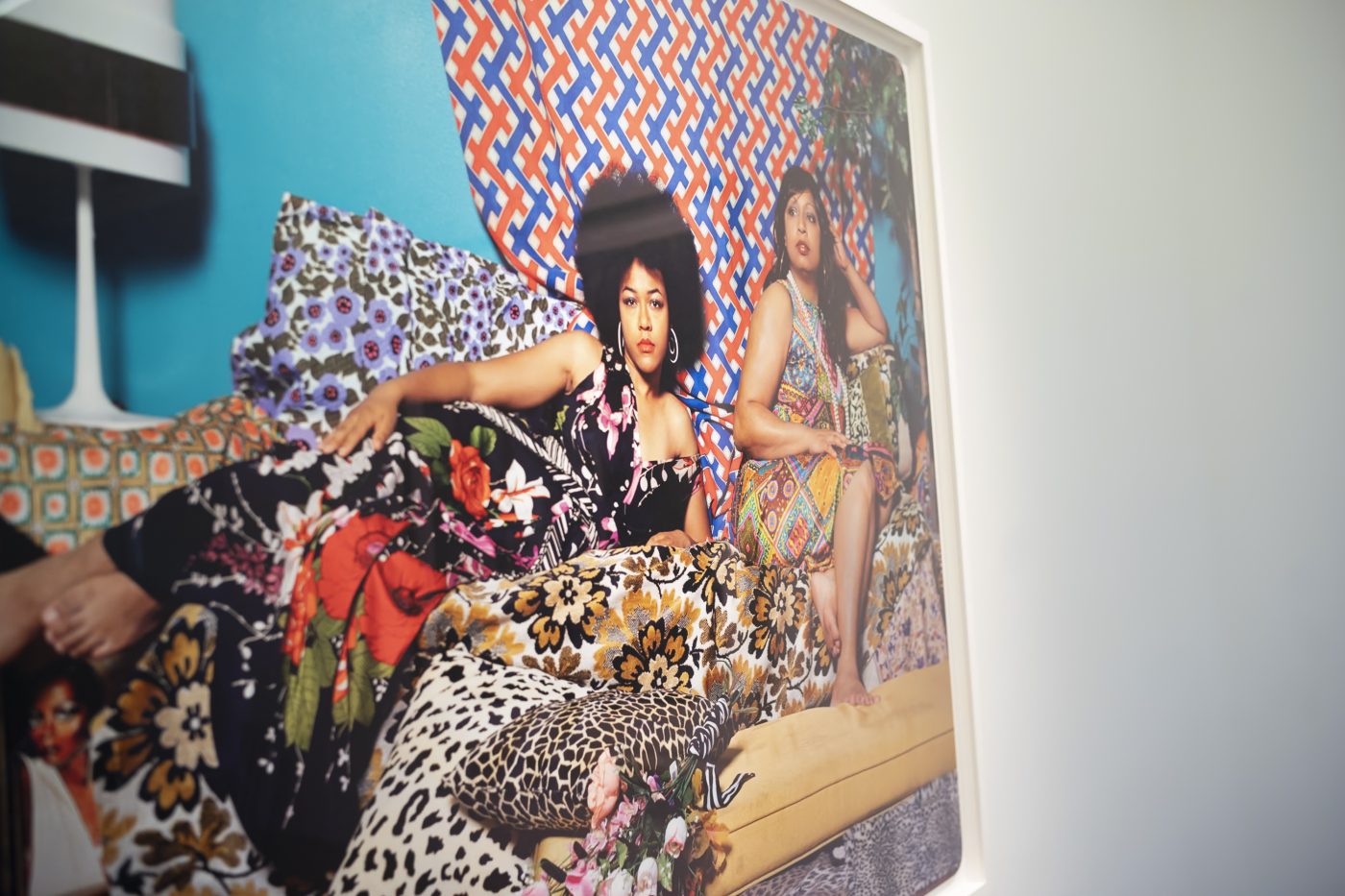
Thomas: You never know a new way of working until you do it. And if it sparks other interests and ideas for people, then I’m glad to have set the standard and to be the pioneer of it.
Freund: Yancey was talking about how you are very community minded.
Thomas: I believe it’s really important to create space for others and to give back. So I’ve created a mentorship program in collaboration with Pratt Institute [Thomas’s alma mater] called Pratt>FORWARD, which is moving into becoming a foundation that I’m creating called Art>FORWARD. It’s a mentorship program for emerging and mid-career artists. We provide best business practices, professional development, learning about running a studio, accounting, tax liabilities. I started it because all my friends were always coming to me with questions like, “Hey, do you know of a lawyer?” And I was like, “Yes, this is who you need to talk to.” Or if I learned about a tax strategy or something, I’d share it. I’m not afraid to share what’s working.
Richardson: I tell Mickalene she should be my life coach.
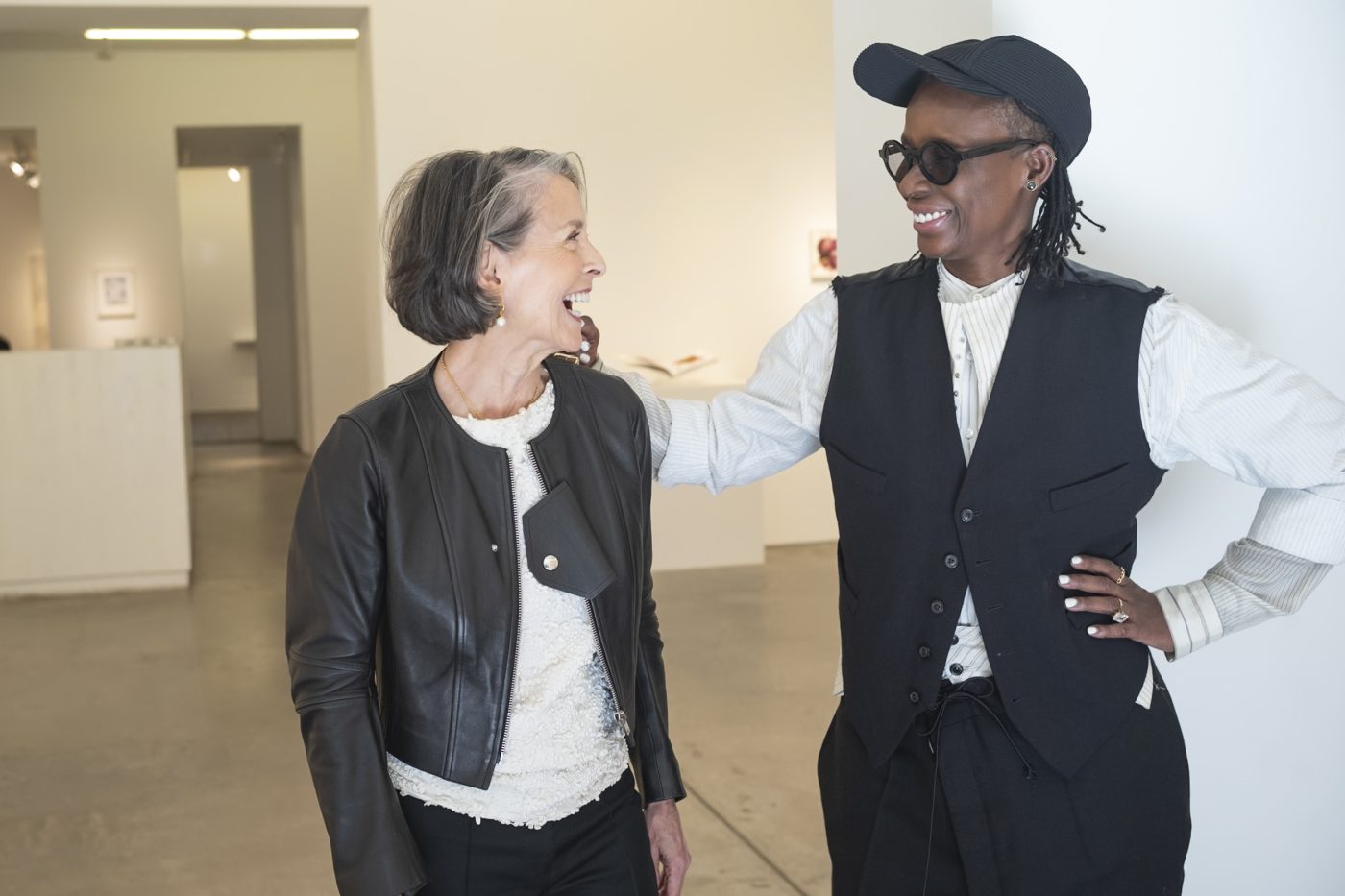
Freund: Could you tell me a bit more about how you two work together?
Thomas: Yancey’s not telling me what to do or make, but she’s seeing things that I’m not seeing so much. I’ve made a lot of photographs, and I’m only selecting one here or some there. So, I love when she says, “I want to come over and look at your images. I know you have more work.”
Richardson: She’s so busy. She doesn’t have time to look at everything she’s making. So, I’m like, “Let me come over and help edit.”
Thomas: She’ll look and go, “You’ve made all of this?!” Which I appreciate. But I think it also takes a very special person who is invested in the artist’s growth.
